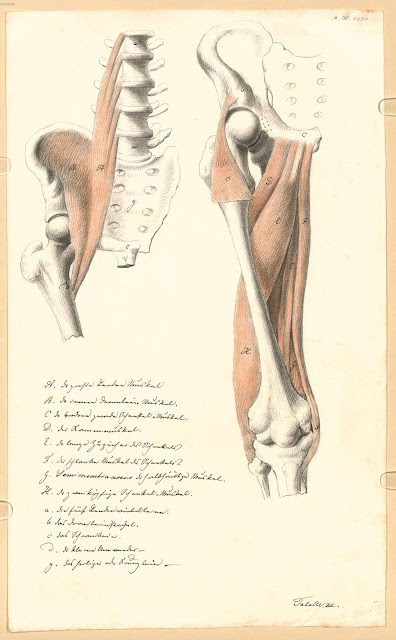This collection of human anatomy drawings was issued by German Architect (¿?) and Painter Anton Hallmann (1812 - 1845). The original manuscript is located in Nuremberg, but I couldn’t find information about Hallmann’s bio, probably because he died young, was only 33.
This collection of anatomy sketches is really inedited: most of Hallmann well known drawings are architectural paintings in oil like Fossa Nuova Monastery in Roma (1841), The King of Prussia Villa (1844) and several monuments and buildings in Munich, St. Petersburg, London and Paris. I found some of his drawings at askart.com (direct link with 2 examples, auctioned?), and also at artnet.com -see oil on canvas arabic scene, auction pending for around 7000 EUR / 9100 USD, but for me the best drawing of all collection, issued one year before he died- on direct link here. My surprise arrived when I found a Hallmann's drawing on arcadja.com -direct link here- auctioned on March this year 2012 for only... 700 EUR (900 USD).
Some of the sketches available on this manuscript are: facial and neck muscles structure, sore muscles, trunk muscles, upper/lower arm muscles, forearm muscles, pelvic, high/lower leg muscles, foot muscles, several back & oblique views, etc.
For a high resolution, pdf version of this manuscript, contact me (facsimilium AT gmail DOT com).



















